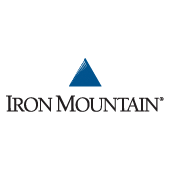The paperless office isn’t a modern concept. In fact, an early prediction of the paperless office was made in a Business Week article which was published in 1975. Forty years on and close to one in three (31 per cent) business executives responded to recent research from the Association for Information and Image Management (AIIM) admitting their office is still ‘piled high’ with paper documents. The Association’s look at the paper in today’s workplace reveals that only 17 per cent of employees work in what could be described as a paper-free environment, thereby missing out on the advantages in productivity, accessibility and compliance that AIIM assert come from going paper free. This revelation comes as this week businesses are encouraged to take the ‘paperless pledge’ and go paper-free for the day, as part of AIIM’s World Paper Free Day on 6 November.
There are a number of reasons why businesses struggle to get the paper out of the workplace: 56 per cent of organisations believe they still require contracts, orders and booking forms to be signed on paper and 40 per cent feel the need to reference and file hard copies of their important documents. The new study conducted by AIIM and supported by a number of industry leaders in information management including Iron Mountain, reveals that the many businesses (49 per cent) don’t want to give up paper because of employee preferences, a lack of management initiatives, or low awareness of paper-free options (39 per cent).
Sue Trombley from Iron Mountain explains, “As you can see from AIIM’s research, and perhaps from personal experience, paper has not completely disappeared from work processes. Cultural, technical and resource constraints, along with certain legal requirements, mean that a fully digital future looks a long way off for many businesses. The first step these organisations should take is to adopt a “paper-light” approach.
“Going paper-light is about digitising any paper records for a valid business need, such as frequent access. In order to save space, off-site storage is a recommended option if the original paper records cannot be destroyed or if you don’t need to image all the records. You can then digitise your off-site records as you need them – it’s an approach that saves time and office space – and it helps your employees to work smarter and provide a better service to your customers,” Trombley concludes.
Iron Mountain recommends that companies follow these three simple steps to go paper light:
- Make the most of widely available and affordable eLearning courses and tools to reach all employees in all locations with the same message – and expectations – for managing information in all formats throughout its lifecycle.
- If organisations haven’t already thought about imaging their paper records, it’s worth taking a look at document processes or work flows to see what might be right for scanning, such as records required immediately, regularly or by more than one party. The original paper records can then be destroyed or archived securely depending on relevant retention guidelines.
- An annual clean-up day can go a long way toward putting the focus on the control of paper records and deciding how to get paper records out of the office environment. With proper guidance, employees can help determine whether to destroy records or send them to a secure off-site storage facility.
[su_box title=”About Iron Mountain” style=”noise” box_color=”#0e0d0d”] Iron Mountain Incorporated (NYSE: IRM) is a leading provider of storage and information management solutions. The company’s real estate network of 64 million square feet across more than 1,000 facilities in 36 countries allows it to serve customers around the world. And its solutions for records management, data backup and recovery, document management and secure shredding help organisations to lower storage costs, comply with regulations, recover from disaster, and better use their information for business advantage. Founded in 1951, Iron Mountain stores and protects billions of information assets, including business documents, backup tapes, electronic files and medical data.[/su_box]
Iron Mountain Incorporated (NYSE: IRM) is a leading provider of storage and information management solutions. The company’s real estate network of 64 million square feet across more than 1,000 facilities in 36 countries allows it to serve customers around the world. And its solutions for records management, data backup and recovery, document management and secure shredding help organisations to lower storage costs, comply with regulations, recover from disaster, and better use their information for business advantage. Founded in 1951, Iron Mountain stores and protects billions of information assets, including business documents, backup tapes, electronic files and medical data.[/su_box]
The opinions expressed in this post belongs to the individual contributors and do not necessarily reflect the views of Information Security Buzz.



